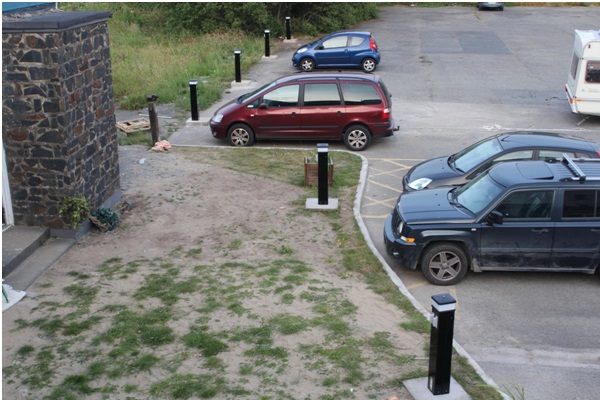Fairbourne
LL38 2PX
The electric supply of the building has been designed to feed enough energy for the hotel and also the restaurant and plenty of reserve has been also installed. But the demand of the new chargepoints were not taken in account 40 years ago.
Normally the electric power is sufficient, but there may be relatively short periods of time when the demand is higher than the capacity of the supply. It may happen in busy periods, when many cars are being charged and the kitchen starts to use a lot of power to prepare the food for the restaurant.
An obvious solution would be to upgrade the supply cable, but then the local tranformer would turn out to be too small, so it should be also replaced. The total cost would be very high. So we do not do this now, but limit the demand of the chargepoints instead. If the supply is getting overloaded, we switch off one or more chargepoints temporarily.
There are some products on the market to handle this problem, but the soultion they offer is not the best.
They say the following: Let’s say your supply has a maximum capacity of 100kW and your building maximum demand is 60kW, then we limit the power of the chargepoints to 40kW. With our system they will not draw more power from the grid then this.
The problem is, that the building takes the 60kW very rarely. Most of the time it is working with around 15kW or less. It means, that most of the time if all the chargers work, the total consuption is around 15kW + 40kW makes 55kW, although the supply is capable up to 100kW. We could use 45kW more for charging the cars.
My idea was to measure continously the power of the supply to see if it is getting overloaded. We measure all the three phases, and if we see that one phase is getting overloaded, then we switch off a chargepoint, which is connected to this phase. If it is not enough, we disconnect another one. If the current of the supply falls back and we have enough reserve current, we switch back something.
With this method we can draw as much power from the grid as possible.
As an additional protection we have temeperature sensors on the three phase wires as well as on the neutral wire and the supply cable itself. If the temperature of a wire or a cable exeeds it’s rated temperature, we decrease the corresponding load.

The erection the first Rolec EV chargpoint has been completed

The six Rolec chargepoints in the carpark of the Springfield Hotel, Fairbourne
EV chargepoints demand limit controller LCD




